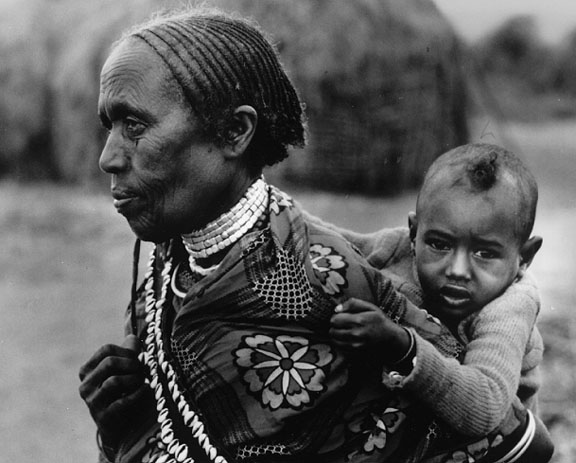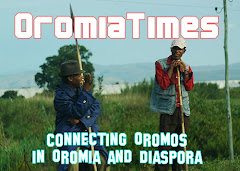| Immediately after the zone was created, the task of the preparation of the Integrated Land Use Plan was commissioned to Oromia Water Works and Design Enterprise in September 2008. A technical committee was set up involving the members of the administration of the zone to meet regularly with the OWWDE in order to make sure that things were going according to plan. MERGA YONAS and AYENEW HAILESELASSIE FORTUNE STAFF WRITERS recount how the steering committee, of which the Special Zone Administration was also a member and secretary, supervised the whole process. Ground Work for Oromia Special Zone to be Reassigned The Oromia Water Works and Design Enterprise (OWWDE) is going to handover the Integrated Land Use Plan for the Oromia Special Zone to the Zones’ Land Administration and Environmental Protection Office in December 2009. The related study, which cost the Oromia Regional State 5.8 million Br, started late 2008 aiming at improving the zone’s management of rural and urban land, according to Awal Abdi, head of Oromia Special Zone Land Administration and Environmental Protection Office. All eight towns of the zone including Dukem, Sebeta, Burayu, Galan, Sululta, Holeta, Sendafa and Legetafo, were included in the study. These towns make up a total land asset of 480,000ht in the zone. The creation of the Oromia Special Zone around the end of the 2007/08 and the beginning of the 2008/09 fiscal years, according to Awal, was necessitated by the emerging issue of the overflowing demand for land from Addis Abeba to towns of the Oromia Regional State around Addis. “Addis Abeba has become saturated,” Awal said. “So investors have increasingly sought to get land from nearby Oromia towns. The area has become a hot spot for national and international investors.” Immediately after the zone was created, the task of the preparation of the Integrated Land Use Plan was commissioned to OWWDE in September 2008. A technical committee was set up involving the members of the administration of the zone to meet regularly with the OWWDE in order to make sure that things were going according to plan. A steering committee, of which the Special Zone Administration was also a member and secretary, supervised the whole process. The enterprise immediately undertook rapid assessment and presented its recommendations to the zone in December to introduce changes that would not be harmful. These changes were to be implemented until the main study was completed and delivered, according to Taye Alemayehu, general manager of OWWDE. One such change involved the restriction of quarrying licences to areas outside of a radius of three to five kilometres from a town, the distance varying with the size of the respective town, Taye said. “We made the recommendation based on the rapid assessment so that economic activities will not be disrupted,” Taye said. The work on the Integrated Land Use Plan continued after the rapid assessment was delivered. Taye says that the study has divided the land in eight capability categories. “Land designated under categories 1, 2, and 3 will be restricted to agriculture and rural services,” he said. The setting aside of land for various uses, in the study, was made according to four suitability criteria: bio-physical, environmental, social and economical suitability. If a proposed project fails any one of these suitability tests, it will be rejected. The bio-physical suitability demands that something be used for the purpose for which it has been created. “It looks at what the most beneficial use of the land is,” Taye said. “If you build a house on land that is more suitable for agriculture, both the construction and the agriculture will suffer.” The plan is also recommending that all forest covered land be left untouched. This kind of approach will enable the special zone to determine how residents and investors could be integrated on the available land. It will also determine how road construction, agriculture and others, could be integrated as well as help to prevent illegal tenure. The plan, according to Taye, is a comprehensive document that has many components, guiding principles, maps and digital tools. He gives the example that while the rapid assessment has blindly instructed all quarries to be three to five kilometres away from a town, the integrated plan has actually provided maps which will help authorities decide exactly where quarrying licences should be given. “Previously, all eight towns of the zone planned independently without any system to govern their planning,” Taye explained, “Planning should take place with the consideration of all towns around Addis Abeba as one system. Addis Abeba is now running out of its potential and is leaning heavily on the towns of the special zone.” OWWDE approached the problem differently, by starting plans from rural areas, he noted. “We first studied land use in rural areas,” he said. “Why should towns expand when there is no shortage of land? Urban development should be planned only on the land that is left over from rural areas.” The plan has clearly defined urban-urban, urban-rural and rural-rural relationships. “The approach we used in this plan, starting from rural to the urban, was very unique, it was widely debated and appreciated at a meeting, for the plan, that involved 500 people which took place at the Southern Campus (Building College) of Addis Abeba University. Taye expresses that their work has so attracted interest from the federal and regional governments that it is now working on similar projects for Afar, Amhara and Somali regional states. When the Integrated Land Use Plan is submitted to the Special Zone Administration, it will be given a strategic direction depending on an area based plan. The plan will be used to develop a programme based on which area based projects will be produced. The plan will first go to the regional parliament to become a law. “The zone will be responsible for the implementation,” Awal clarifies, “which is no problem since the Integrated Land Use Plan comes together with an implementation plan.” The plan includes clear indications of which areas are suitable for specific industries. The implementation will take place in five directions. The implementation is including the Dukem, Legetafo, Sendafa, Beke, and Berak, Sebeta, the Burayu, Tatek, Sululta, Chancho, and Mulu directions, according to Awal. |
| By MERGA YONAS and AYENEW HAILESELASSIE |
November 11, 2009
Oromia for Sale! Ruling Regime Plans to "Reassign Oromia Special Zone" To Legalize Selling of Oromia to "Investors"
Subscribe to:
Post Comments (Atom)

















No comments:
Post a Comment